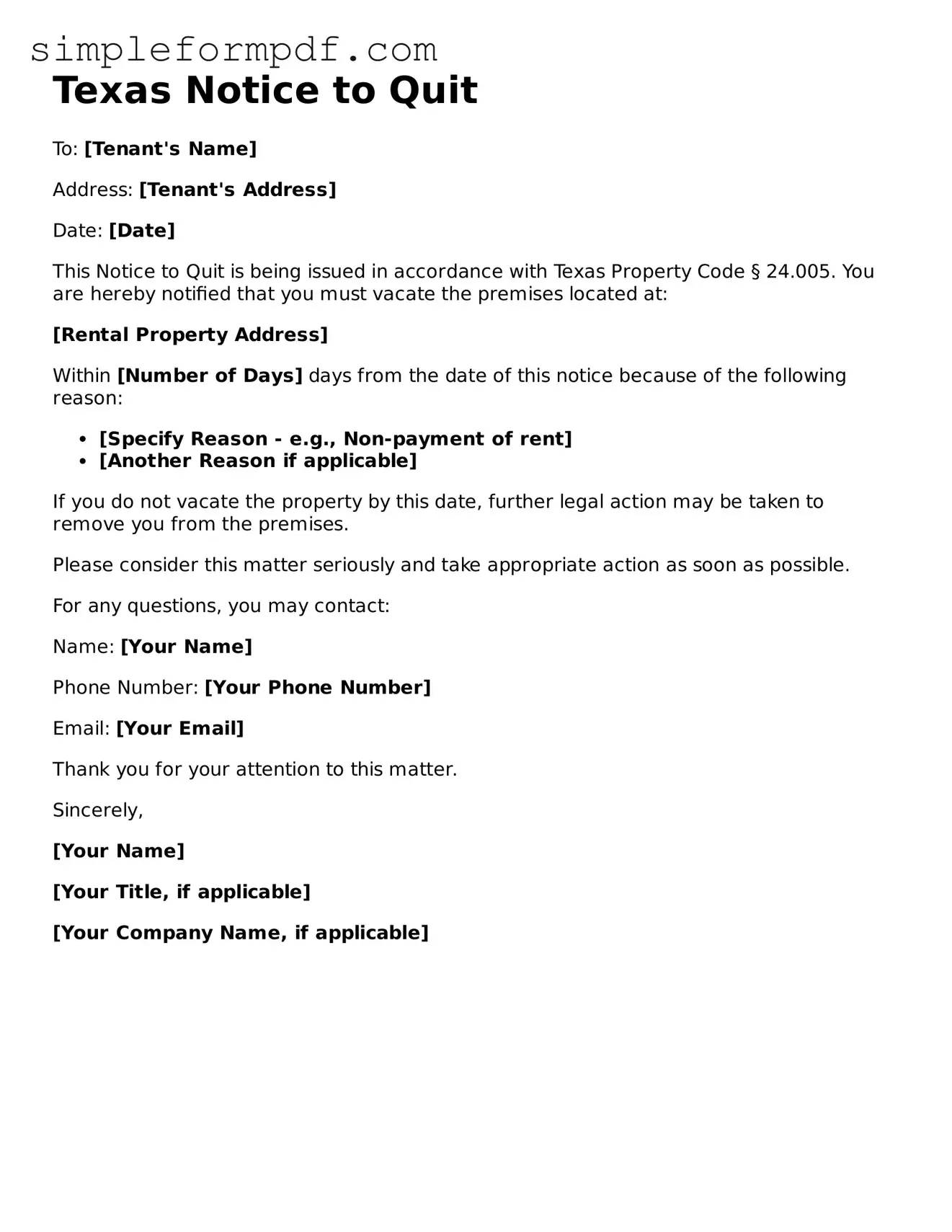Free Notice to Quit Form for the State of Texas
The Texas Notice to Quit form is a legal document used by landlords to inform tenants that they must vacate the rental property. This notice typically serves as a preliminary step in the eviction process, outlining the reasons for termination of the lease. Understanding how to properly fill out this form is essential for both landlords and tenants to ensure compliance with Texas law.
Ready to get started? Fill out the form by clicking the button below.
Launch Editor
